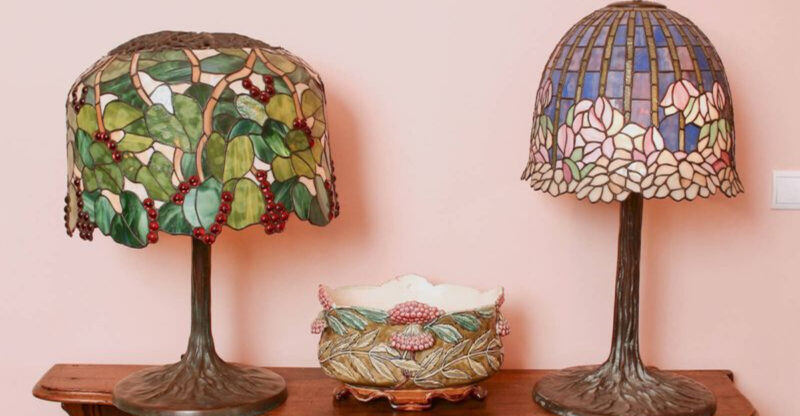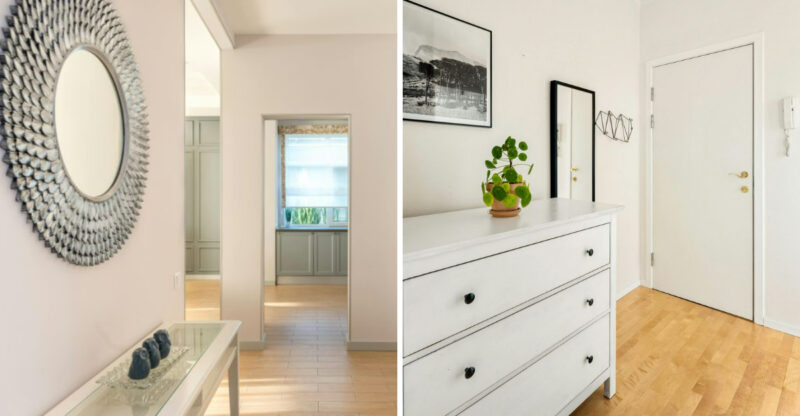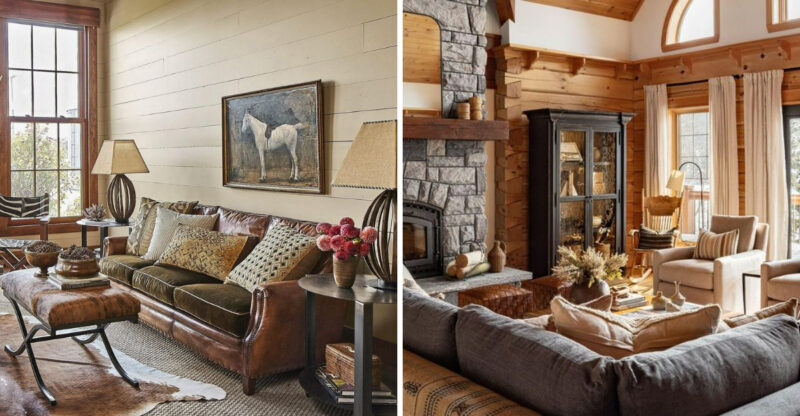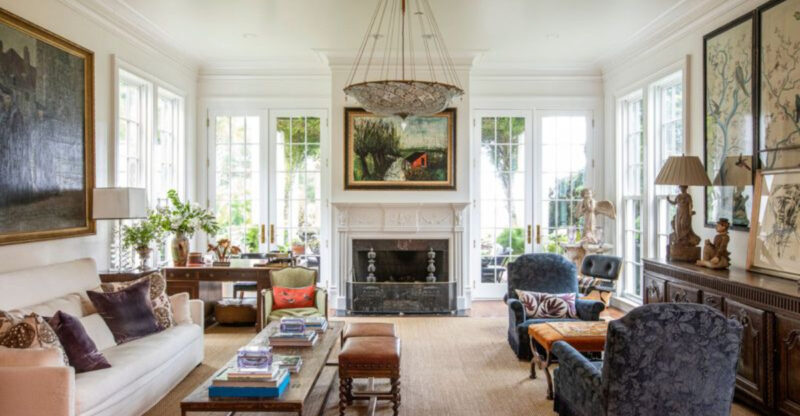20 Modern Living Room Ideas That Feel At The Cutting Edge Of Design, Yet Still Soft And Inviting

Modern design doesn’t have to mean cold or sterile I’ve seen plenty of living rooms that feel sleek and inviting. The trick is in the balance: mixing bold lines and smart tech with soft textures, warm lighting, and personal touches that make the space feel lived in.
Whether you’re working with a blank canvas or refreshing what you’ve got, these ideas show how to create a living room that feels both ahead of the curve and totally you. It’s comfort without compromise and style that actually works for real life.
1. Curved Furniture Makes a Comeback

Forget rigid lines and embrace the sensual curves making waves in modern design. Rounded sofas and circular coffee tables create a natural flow in your space while making the room feel instantly more approachable.
The organic shapes encourage conversation and relaxation in a way that boxy furniture simply can’t match. Plus, curved pieces make excellent focal points without the harshness that sometimes comes with ultra-modern aesthetics.
2. Biophilic Elements Bridge Nature and Technology
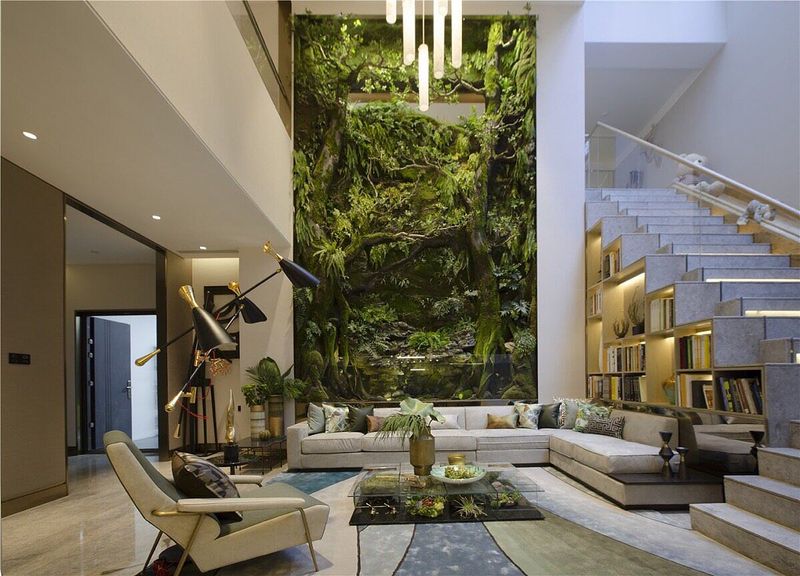
Bringing the outdoors inside creates a living space that feels both innovative and grounded. Large leafy plants, natural wood finishes, and stone elements work beautifully alongside sleek technology and modern furniture.
The contrast between organic materials and cutting-edge design creates visual interest while maintaining a sense of balance. I find that rooms incorporating living plants tend to feel more alive and welcoming, even when the architecture is starkly modern.
3. Statement Lighting as Functional Art
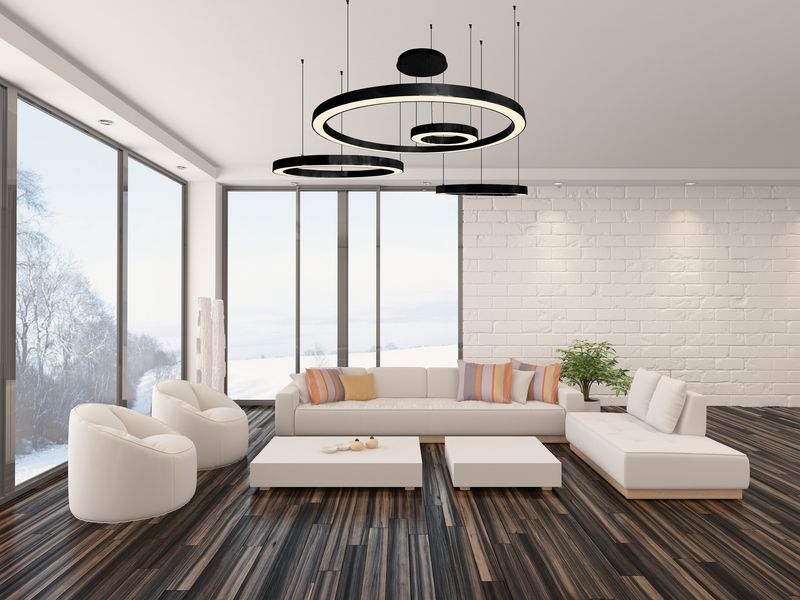
Gone are the days when lighting was merely practical. Today’s most exciting living rooms feature sculptural lighting fixtures that double as artistic statements. Oversized pendants or architectural floor lamps become conversation pieces while casting a warm, inviting glow.
The trick is choosing pieces with presence that still provide the right illumination for your space. Look for fixtures with adjustable brightness to transition from daytime functionality to evening ambiance with ease.
4. Textural Contrasts Create Depth
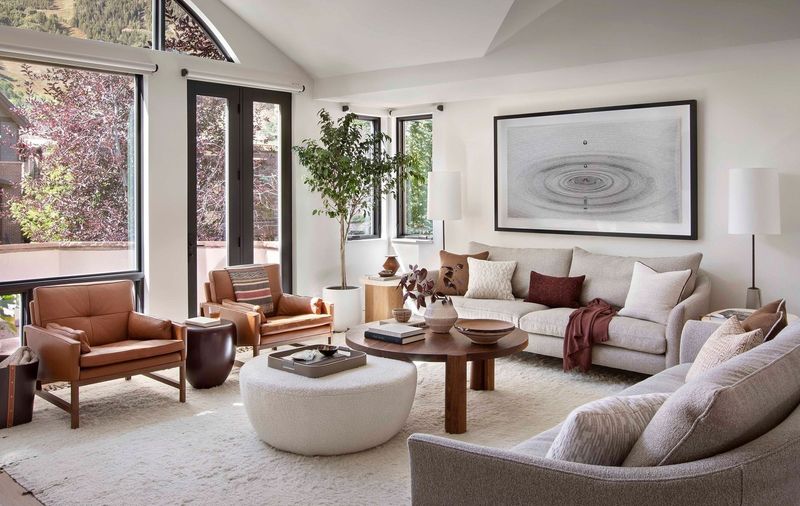
Playing with contrasting textures adds sophisticated dimension to modern spaces. Mix smooth leather with nubby bouclé, glossy surfaces with matte finishes, or sleek metal with natural rattan for an instantly more interesting room.
The tactile variety invites touch and exploration, making your space feel more approachable. I especially love pairing industrial elements like concrete or steel with something unexpectedly soft like velvet or shearling—the juxtaposition feels fresh yet comfortable.
5. Floating Architectural Elements
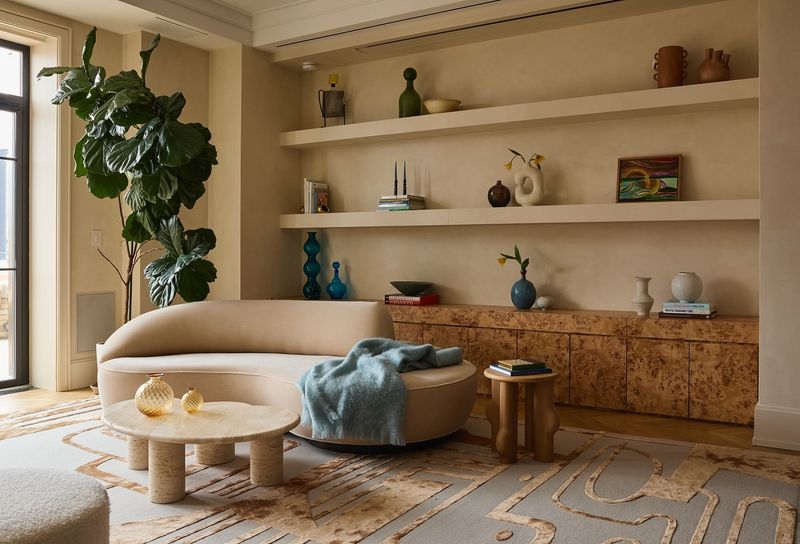
Suspended shelving, hanging room dividers, and floating furniture create an airy, futuristic feel while maintaining practical functionality. These elements give the impression of more space and light while adding architectural interest to otherwise simple rooms.
The beauty of floating elements is how they transform ordinary storage and seating into design features. A suspended bookcase or a bench that appears to hover slightly above the floor immediately elevates your space into something more thoughtfully designed.
6. Monochromatic Color Schemes with Textural Variety

Single-color palettes in varying shades create a sophisticated, cohesive look without feeling flat or boring. The secret is incorporating multiple textures within your chosen color family think a charcoal velvet sofa, slate gray concrete coffee table, and smoky glass accessories.
This approach feels decidedly modern yet timeless. The restrained palette creates a sense of calm while the textural variety ensures the space remains visually interesting and inviting rather than cold or sterile.
7. Multifunctional Furniture for Flexible Living
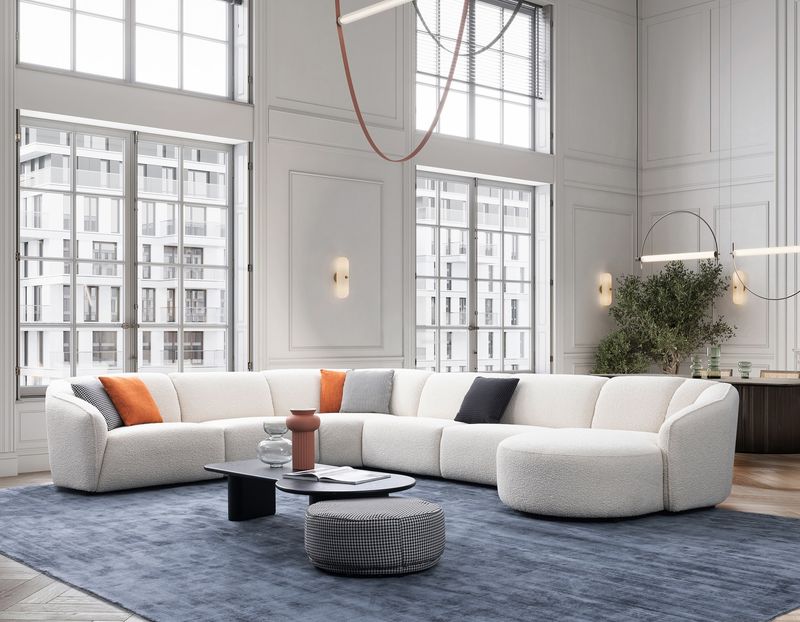
Smart furniture that serves multiple purposes represents the cutting edge of practical design. Modular sofas that reconfigure for different occasions, coffee tables with adjustable heights, or ottomans that provide storage, seating, and table surface in one piece.
These versatile elements adapt to how you actually live rather than forcing rigid functionality. Your space can transform from a formal entertaining area to a casual lounging spot without sacrificing style or comfort perfect for today’s fluid lifestyles.
8. Oversized Art Creates Focal Points
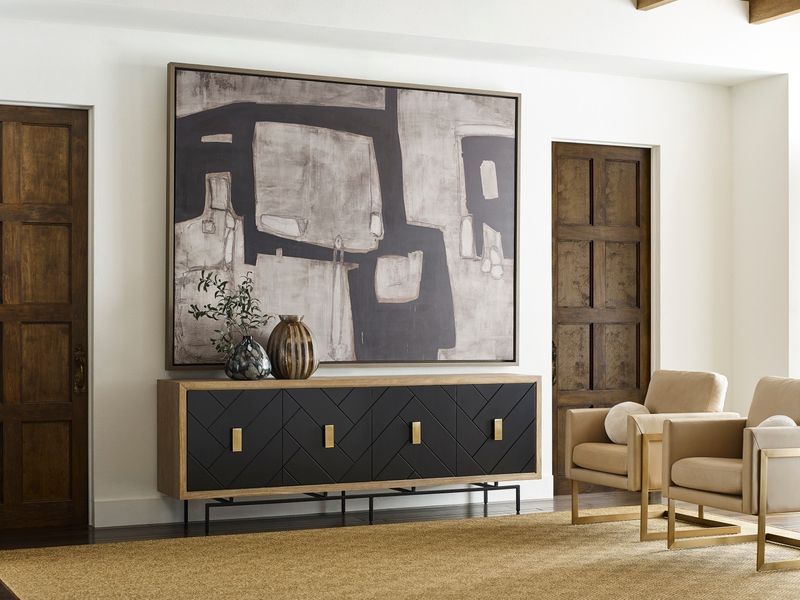
Large-scale artwork instantly elevates a living space, creating a gallery-like atmosphere while providing visual anchor. A single oversized piece often makes more impact than several smaller works, especially in minimalist spaces where each element needs to earn its place.
Abstract pieces work particularly well in modern settings, adding color and movement without competing with architectural features. The emotional impact of a striking artwork brings warmth and personality to even the most streamlined spaces.
9. Integrated Smart Technology That Disappears

The most sophisticated modern spaces incorporate technology seamlessly without letting it dominate visually. Think hidden speakers, televisions that transform into art displays when not in use, and lighting systems controlled by subtle wall panels or voice commands.
This approach maintains the clean aesthetic of modern design while providing all the convenience of smart living. The key is choosing systems that enhance your experience without creating visual clutter or drawing attention to their technological nature.
10. Unexpected Color Pops Against Neutral Backdrops

Strategic bursts of vibrant color against calm, neutral backgrounds create visual excitement without overwhelming the senses. A vivid blue armchair or sunny yellow accent table can transform an otherwise understated space into something memorable.
The beauty of this approach is its flexibility you can easily update the look by swapping out colorful elements as your taste evolves. The neutral foundation ensures the space remains sophisticated while the color injections add personality and prevent the modern aesthetic from feeling cold.
11. Mixed Metals Create Subtle Luxury
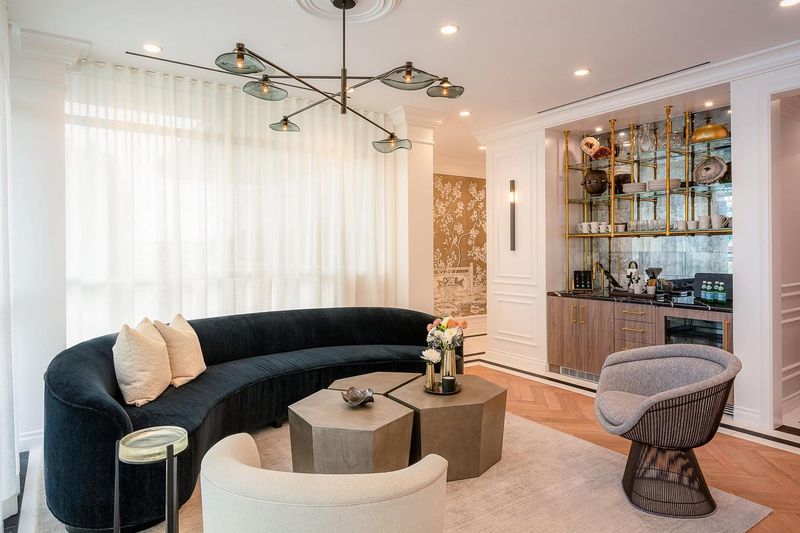
Combining different metal finishes brass, chrome, blackened steel, copper adds richness and depth to modern interiors. Unlike the matchy-matchy approach of the past, today’s sophisticated spaces embrace these thoughtful metal mixtures as a form of visual texture.
The key is maintaining a hierarchy perhaps brass as your dominant metal with smaller touches of other finishes as accents. This layered approach feels more collected and personal than spaces where everything coordinates perfectly, creating that lived-in luxury that makes modern rooms feel inviting.
12. Conversation Pits Reimagined for Modern Living
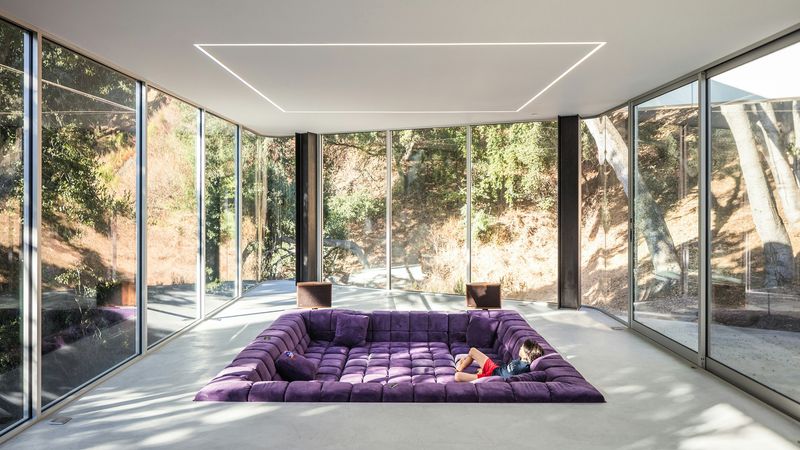
The retro conversation pit gets a contemporary update with modular seating arrangements that create intimate gathering spaces without the permanence of sunken floors. Low-profile sectionals arranged in U or circular formations encourage face-to-face interaction while maintaining design flexibility.
This layout breaks from the traditional sofa-facing-TV arrangement that dominated for decades. By centering the design around human connection rather than technology, these spaces feel both innovative and wonderfully old-fashioned in their prioritization of real-life engagement.
13. Translucent Elements Create Visual Lightness
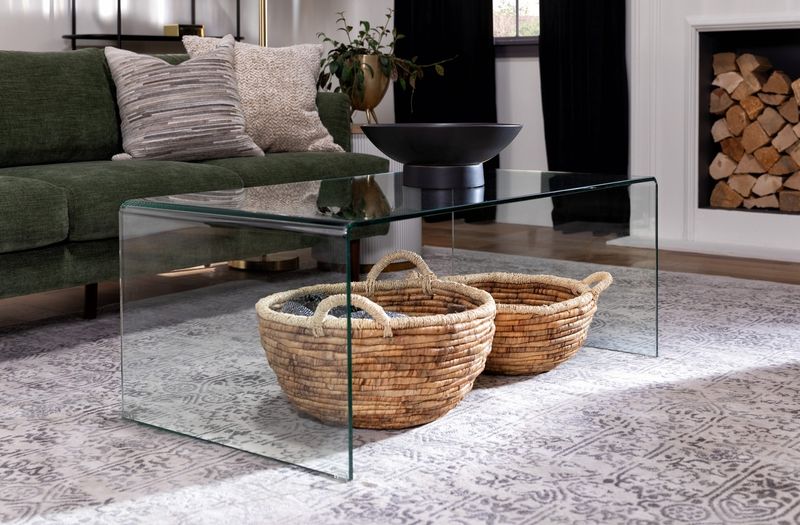
Acrylic furniture, glass partitions, and sheer textiles create an ethereal quality that makes spaces feel larger and lighter. These see-through elements perform practical functions without the visual weight of traditional materials, creating an almost magical floating effect.
A glass coffee table or acrylic console visually disappears while still providing necessary surface area. This approach works especially well in smaller spaces or rooms where maintaining sightlines and light flow is important to the overall sense of openness.
14. Layered Lighting Creates Atmosphere
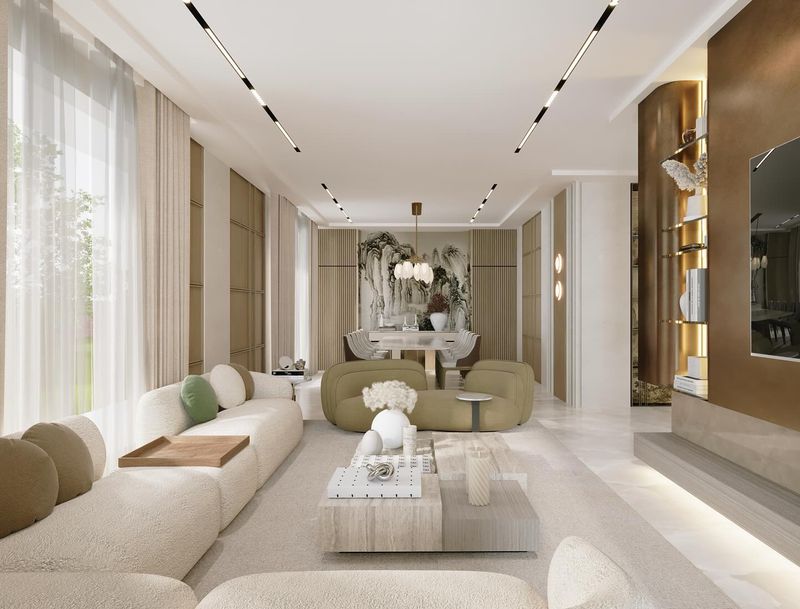
Multiple light sources at different heights create dimension and adaptability in modern living spaces. Combining ambient ceiling lights, mid-level wall sconces, and low table lamps allows you to completely transform the mood of a room without changing any furniture.
Smart lighting systems take this further by allowing preset scenes for different activities. The thoughtful orchestration of light and shadow defines spaces within open floor plans and highlights architectural features while creating the warm glow that makes even the most modern room feel welcoming.
15. Acoustic Solutions Disguised as Design Features

Sound-absorbing panels, textiles, and furnishings that reduce echo and noise have evolved from purely functional to genuinely beautiful design elements. Sculptural wall treatments that happen to dampen sound or textured ceiling installations that improve acoustics contribute to both comfort and aesthetics.
These elements solve the common problem of modern spaces with their hard surfaces and open plans feeling noisy and reverberant. The result is a room that not only looks sophisticated but also feels more intimate and comfortable for conversation.
16. Vertical Gardens Bring Living Walls Indoors
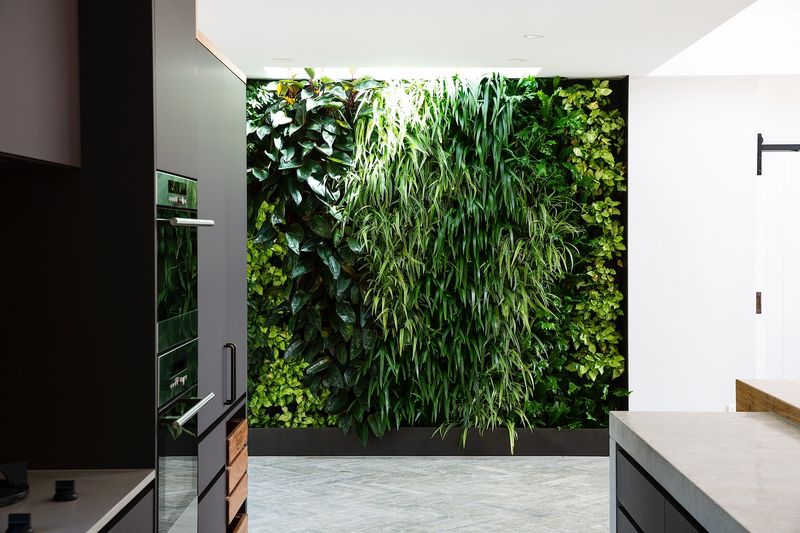
Living walls transform ordinary vertical surfaces into lush, breathing art installations that improve air quality while adding natural beauty. These botanical features create a striking contrast against clean architectural lines and manufactured materials typical in modern design.
Advances in vertical gardening systems make maintenance simpler than ever before. Some setups even incorporate automated irrigation and lighting. The visual impact of a wall covered in varied foliage creates an instant focal point that feels both cutting-edge and deeply connected to nature.
17. Handcrafted Elements Add Soul to Sleek Spaces
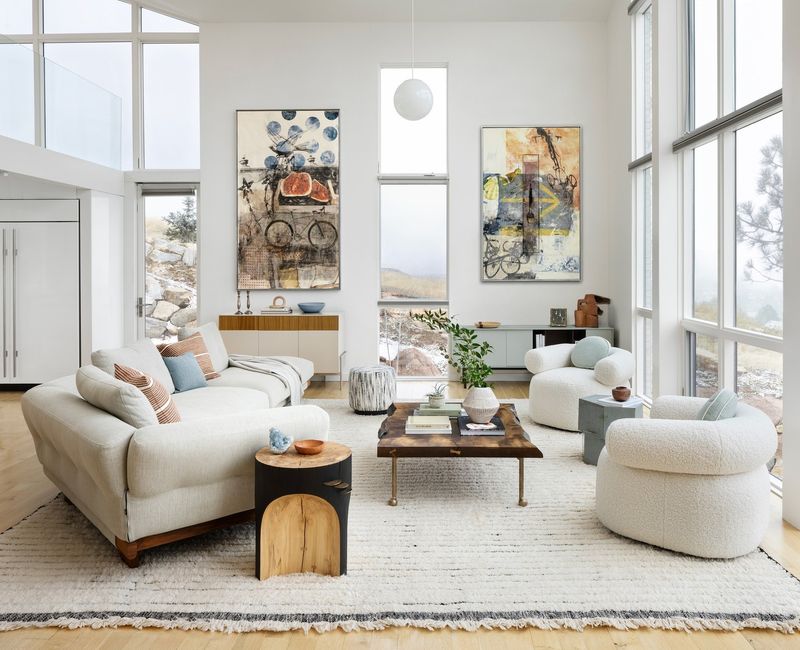
Artisanal pieces hand-thrown ceramics, woven textiles, or carved wooden objects bring warmth and character to modern interiors that might otherwise feel too perfect or impersonal. The visible evidence of human craftsmanship creates emotional connection in spaces dominated by machine-made precision.
The juxtaposition of handmade items against sleek contemporary backgrounds creates compelling visual tension. I find that incorporating even a few artisanal elements transforms a space from simply stylish to genuinely engaging, with the imperfections of handcraft making high-design elements feel more approachable.
18. Zoned Areas Within Open Plans
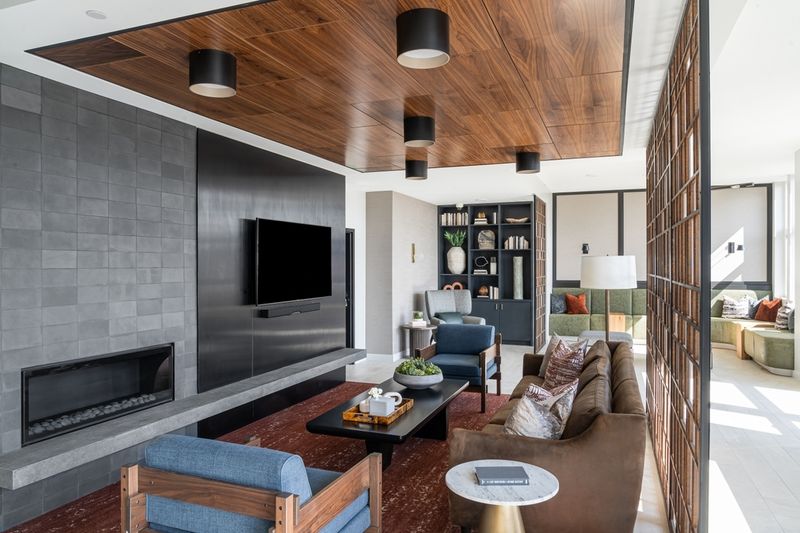
Thoughtfully defined activity zones within open-concept spaces create functional distinction without sacrificing the airy, connected feeling that makes modern living so appealing. Area rugs, furniture groupings, or subtle level changes can delineate conversation areas from reading nooks or media spaces.
This approach maintains visual connection while creating psychological comfort through defined purpose. The beauty of well-executed zoning is how it guides movement and activity naturally, making large spaces feel both impressive and intimate simultaneously.
19. Sculptural Staircases as Living Room Features
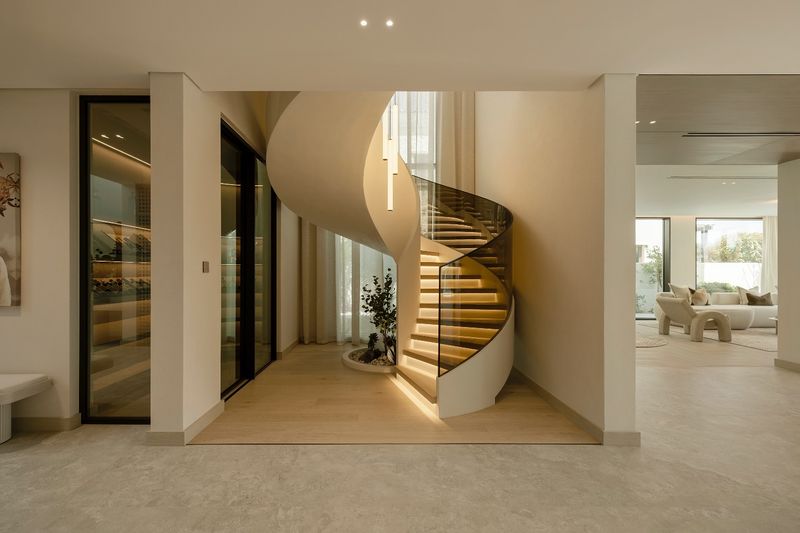
When living rooms incorporate or adjoin staircases, transforming these functional elements into sculptural centerpieces creates architectural drama without sacrificing usable space. Floating treads, glass balustrades, or ribbon-like forms turn everyday circulation into artistic statements.
These eye-catching vertical elements draw the eye upward, making ceilings feel higher and spaces more expansive. The negative space between stair components becomes as important as the structure itself, creating visual lightness that contributes to the overall sense of openness and modernity.
20. Warm Minimalism Balances Simplicity and Comfort
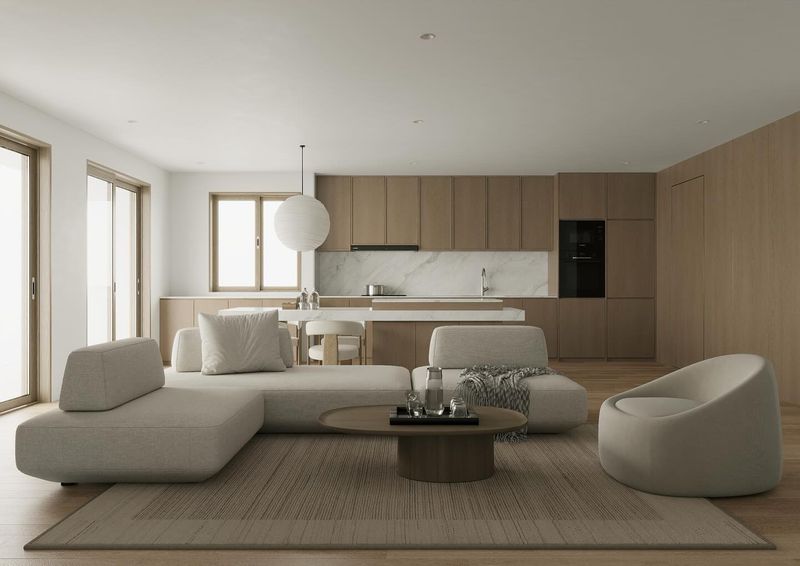
Moving beyond stark minimalism, today’s most inviting modern spaces embrace a warmer approach that maintains clean lines while incorporating natural materials, subtle texture, and thoughtful comfort elements. Think streamlined furniture in natural woods rather than chrome, or simple forms upholstered in tactile fabrics.
This balanced aesthetic removes unnecessary visual noise while preserving the elements that make a space feel human and lived-in. The result feels intentionally curated rather than empty, with each carefully chosen piece or material contributing to both function and emotional response.


